Saudi Arabian Food Dishes: Basic Overview
Common Ingredients
Common Cooking Methods
Courses
Meals
Key Taste
Eating Etiquette
Meal Presentation
Culinary Festivals
Influence and Fusion
Popular Types of Saudi Arabian Dishes
-
Rice Dishes
In Saudi Arabian cuisine, rice dishes are central to the culinary experience and often serve as the main course.
They typically feature basmati rice cooked with a variety of spices, meats, and vegetables.
-
Desserts
Saudi Arabian desserts are rich and often sweet, featuring ingredients like dates, nuts, honey, and wheat.
They are an essential part of Saudi culture, especially during festivals and celebrations.
-
Snacks
Saudi Arabian snacks range from simple to elaborate and are often enjoyed with tea or coffee.
These snacks can be sweet or savory and are a staple in Saudi hospitality.
Saudi Arabian dishes are traditional or widely consumed culinary creations in Saudi Arabia, a West Asian country whose official name is the Kingdom of Saudi Arabia (KSA).
While dishes in Saudi Arabia vary among regions, they often use staple ingredients like wheat, rice, lamb, and chicken. Once you know them better, you’ll see a bigger picture of the dishes commonly enjoyed in the Middle East.
Get ready to discover 23 superb specialties in Saudi Arabia. To add to that, allow me to give you a few suggestions for dishes and beverages that often go together in Saudi Arabia.
23 Popular Saudi Arabian Dishes with Filters
Discover 23 popular culinary creations of Saudi Arabia while also using the filter system to check out these dishes in alphabetical order, dish types, ingredients, cooking methods, tastes, and worldwide popularity.
Then, get to know some styles of Saudi Arabian cuisine with options like the most popular, national, traditional, and street food:
Kabsa
- National
- Traditional
Kabsa is a national dish of Saudi Arabia and other Arabian Peninsula countries that consists of basmati rice, meat, and vegetables. The meat is usually beef, camel, chicken, fish, goat, lamb, or shrimp.
When served, kabsa often goes with daqqūs (Arabic tomato sauce). The ancient way from the Ottoman period involves barbecuing the meat in an earth oven on the ground.
Meanwhile, modern techniques include cooking meat in a pressure cooker or grilling it on flat stones over burning embers.
Shawarma
- Street Food
Shawarma is a dish widely eaten in Saudi Arabia, and other countries in the greater Middle East, including Egypt, Israel, Iraq, and Syria. The dish includes thinly sliced meat layering on each other in an inverted cone and slowly roasted over a rotisserie or spit.
Shawarma originally used only lamb or mutton, but street vendors utilize beef, chicken, turkey, or veal today. The seller will shave off the meat from the cooked surface when served.
Saleeg
- Traditional
Saleeg is a national white rice dish originating in the Hejaz region, Western Saudi Arabia. The popularity of Saleeg has spread to Taif city and throughout the Arab world, often accompanied by daggus salad and salata hara.
Saleeg traditionally consists of long-grain rice cooked in meat broth and milk. The rice dish has broth from beef, chicken, or lamb, resulting in a flavor similar to Italian risotto.
When served, the rice is placed on a tabasi (a traditional large plate) and topped with roasted meat and ghee. You often find saleeg during traditional festivals like Shabana.
Mandi
- Traditional
Mandi is a common Saudi Arabian dish of meat and rice in many Arabian Peninsula regions. The meat and rice are mixed with hawaij (Yemeni spice blend) and cooked in a tannour (primitive clay oven).
Regular meat choices are camel, chicken, goat, or lamb. The meat is first boiled with spices to get a meat broth before being used to cook the rice later, which can last up to 8 hours.
Harees
- Traditional
Harees is a favorite food in Saudi Arabia, Iraq, Oman, Qatar, and other Arab states of the Persian Gulf during the Ramadan month. The specialty primarily consists of boiled and crushed wheat mixed with meat.
However, the preparation varies depending on the country. For example, Saudi Arabia adds cardamom pods for more aroma and flavor.
Traditionally, harees were only homemade by the wealthy during Eid, Ramadan, and weddings to share with their neighbors.
Tharid
- Traditional
Tharid, also known by Taghrib, tashreeb, thareed, and trid, is a bread soup in Saudi Arabia. Consisting of bread and broth, tharid is a must-have during Ramadan.
The basic way to eat tharid is to dip the bread into the stock and eat it with meat. Today, this bread soup even has a dry version that involves stacking bread and meat in layers.
Ruz Al Bukhari
- Traditional
Ruz al bukhari is a popular dish in the Hejaz district, Saudi Arabia, consisting of chicken flavored with black pepper, cardamom, cinnamon, coriander, cumin, fennel seeds, nutmeg, and star anise.
Some versions replace chicken with lamb or mutton. The chicken is then served with long-grain rice cooked in the meat broth.
Ful Medames
- Street Food
- Traditional
Ful medames, or ful, is a famous stew made with cooked fava beans in Saudi Arabia, with roots in Egypt. Arabian-Christian communities often cook this fava bean stew during the Lent diet.
Ful is traditionally cooked and served in a large metal jug with cumin and olive oil. Other optional companions are chili pepper, garlic, lemon juice, onion, and parsley.
Ful medames even has a hearty salad form consisting of fava beans, diced tomatoes, lemon juice, olive oil, onion, parsley, pepper, and salt. This ful medames salad is a favorite local mezze (small appetizer) for breakfast.
Mutabbaq Samak
- Traditional
Mutabbaq samak, or mutabbak, is a rice-based dish well-loved in Saudi Arabia and other Arab states of the Persian Gulf.
Mutabbak consists of rice cooked in flavored fish stock and topped with spiced fried fish and caramelized onions.
Some places garnish mutabbak with chopped parsley and nuts and serve it with an Arab salad. Today, local residents even make mutabbak with chicken and other types of meat.
Asida
- Traditional
Asida is one of the most famous desserts in Saudi Arabia, made by stirring wheat flour into boiling water to form a lump of dough. It is sometimes enhanced with added butter or honey.
The rich dish is often eaten on its own without the need for side dishes. Asida often appears in religious holidays or traditional ceremonies, like Eid, Mawlid, and aqiqah (the first haircutting).
Asida is also a breakfast item or a nutritious dish for women in labor.
Ma’amoul
- Traditional
Ma’amoul, or maamoul, is a butter cookie filled with dried fruits or nuts famous in Saudi Arabia. With semolina flour as the main ingredient, ma’amoul is highly versatile.
These filled butter cookies either use dried fruits like dates, figs, or nuts like almonds, pistachios, or walnuts. Maamoul’s shape also varies, from balls to domed or flattened shapes.
Maamoul is associated with various holidays: Eid Al-Fitr, Easter, Purim, etc. These days, this filled butter cookie is served with chocolate and Arabic coffee for any visitor.
Murtabak
- Street Food
Murtabak, or motabbaq, is a pan-fried bread or stuffed pancake notably famous in Saudi Arabia. This stuffed pancake consists of pan-fried crepes stuffed with minced meat, beaten eggs, leeks, chives, or scallions.
When cooked, motabbaq is folded and cut into square pieces. Arab streets feature many vegetarian, chicken, and other murtabak versions.
Ka’ak
- Traditional
Ka’ak refers to biscuits and other baked goods produced throughout Saudi Arabia and the Arab world. Usually, ka’ak is a semolina-based biscuit or cookie with different fillings, like ground dates, pistachios, or walnuts.
Arab Christians often make ka’ak in a wreath shape during Easter to symbolize the thorn crown.
Knafeh
- Traditional
Knafeh is a traditional dessert popular in Saudi Arabia, containing kataifi (spun pastry) soaked in attar (sweet syrup) and stacked with cheese, clotted cream, nuts, or pistachios.
Still, modern knafeh has evolved into many variations, such as khishnah with a crust made of noodle threads, nāʿimah using semolina dough, and mabruma with noodles.
When cooked, knafeh is poured with a thick syrup of sugar, water, and orange blossom or rose water.
Baklava
- Exotic
- Traditional
Baklava is a common layered pastry sweet in modern Saudi Arabian and other Arab cuisines. This layered pastry consists of filo pastry filled with chopped nut filling and flavored with honey or syrup.
This layered pastry has become a trendy dessert in Iran, Turkey, Greece, and other countries. In Saudi Arabia, the sweet treat is a favorite street food item.
Shakshuka
- Traditional
Shakshuka is a famous food in Saudi Arabia, comprising poached eggs in tomato sauce flavored with cayenne pepper, cumin, garlic, olive oil, onion, paprika, and peppers.
Shakshuka is a popular main dish for the evening besides hummus and falafel. These poached eggs in tomato sauce often accompany pickled vegetables, merguez (red, spicy sausage), bread, or mint tea.
Kleicha
- Traditional
Kleicha, or kolucheh, is a cookie that Saudi Arabian people often make for Eid al-Fitr, Eid al-Adha, and other special celebrations like weddings.
Kleicha has many fillings and shapes, like disc or crescent. As for the filling, the usual option is cardamom, sometimes flavored with rose water or saffron.
Other choices include coconuts, dates, dried figs, pistachios, sesame seeds, Turkish delight, and walnuts.
Markook
- Traditional
Markook is a common unleavened flatbread in Saudi Arabia. This unleavened flatbread is made with flour, salt, and water before letting the dough rest and baking it over on a saj (metal cooking utensil) or in a tannour.
The result is a thin, unleavened flatbread similar to pita bread, only thinner and larger. Markook has different names in other Arab countries, like khamir, maluj, and saluf.
Masoob
- Traditional
Masoob is a banana-based pudding popular in Saudi Arabia and the UAE, with roots in Yemen. This banana pudding mainly includes overripe banana, cheese, cream, dates, honey, and ground flatbread.
Muhallebi
- Traditional
Muhallebi is a milk pudding that appeared in Saudi Arabia in the late 8th century through a Persian cook. Originally, muhallebi had 3 versions: one thickens milk with ground rice, one uses chicken, milk, and rice grains, and the last is egg custard.
Today, the muhallebi with chicken is less common, and this milk pudding often contains milk, rice, sugar, and a type of starch, like rice flour or semolina.
Local residents cook these ingredients until thickened and flavor this milk pudding with jasmine or rose extract.
Khabees
- Traditional
Khabees is a regular sweet of flour and oil in Saudi Arabia and other countries, like Bahrain, Qatar, and the UAE.
The dish is also flavored with cardamom and saffron for more flavor. Natives often make khabees for breakfast during Eid days.
Mansaf
- Traditional
Mansaf is a traditional lamb dish in Saudi Arabia, Syria, and Kuwait. Besides lamb, mansaf requires jameed, a hard dry yogurt made of goat or sheep’s milk, to make the broth.
Then, the lamb is cooked in this jameed broth until done. Local residents use a large platter lined with a layer of markook to serve mansaf.
The lamb meat is placed on a bed of bulgur or rice and garnished with almond and pine nuts. The last step is pouring the jameed sauce over.
Quzi
- Traditional
Quzi is a rice dish called “madfoon” in Saudi Arabia. The dish traditionally begins by stuffing a whole lamb with rice, nuts, spices, and vegetables.
Then, the locals wrap the lamb in aluminum foil and cook it over an open heat source. When finished, the stuffed rice is taken out and served with the lamb, roast nuts, and raisins.
What Is Saudi Arabian Food Culture?
Saudi Arabian food culture is rich and diverse, reflecting this West Asian country’s history, geography, and Islamic traditions. Here’s a closer look at some key aspects:
Remember to spend your time going through a few combos of dishes and beverages coming from Saudi Arabia to give you a better picture of the cuisine.
What Saudi Arabian Dishes to Have with Beverages?
Savor more flavors from these dishes by pairing them with the right drink options of Saudi Arabia, allowing you to create unique combos of fascinating tastes:
Due to historical and cultural ties, many drinks that are popular in Saudi Arabia are also beverages widely consumed all over the Middle East. Therefore, it’s quite easy to find suitable beverages for ideal pairings.
Once you’ve learned about the dishes in Saudi Arabia, I suggest sharing them with people you know to spread these flavorful creations even further. Also, you should leave a comment sharing your thoughts.



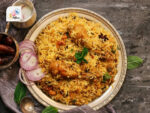
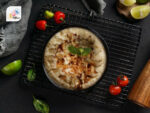

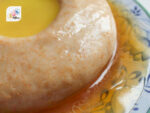
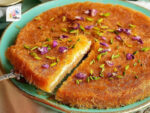

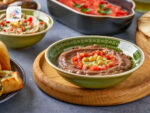


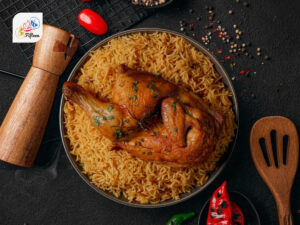
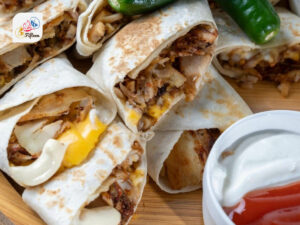
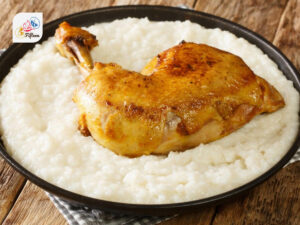
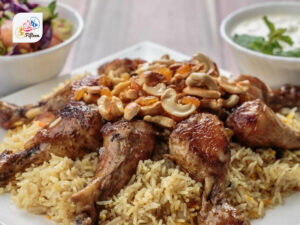
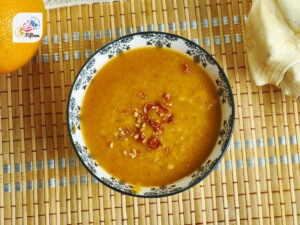
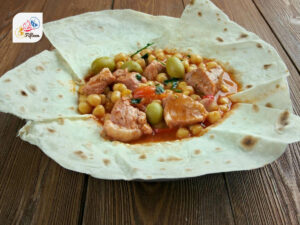
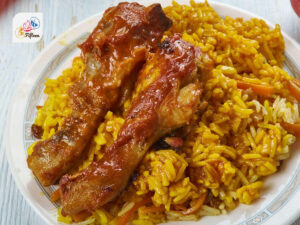
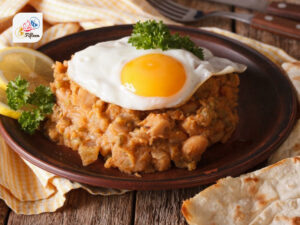
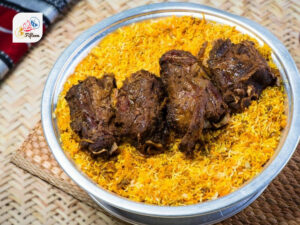
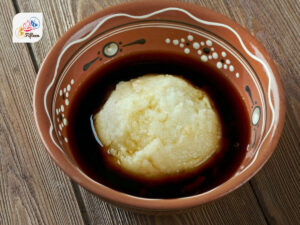
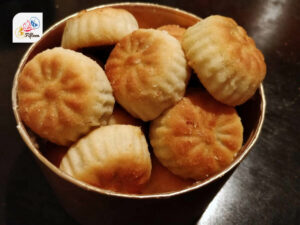
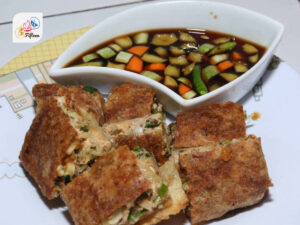

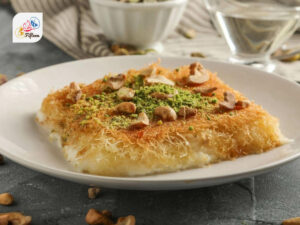
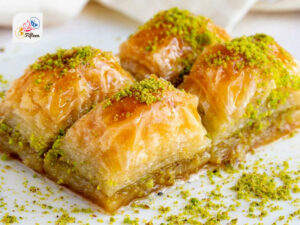
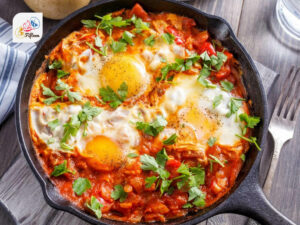
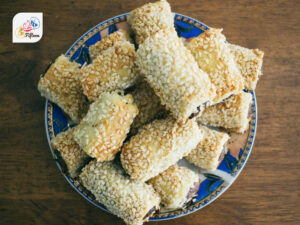
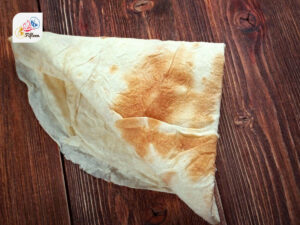
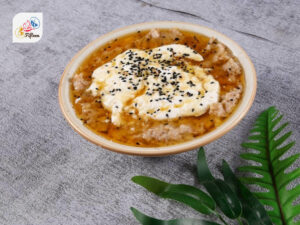
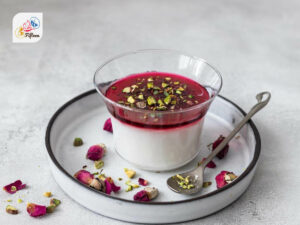
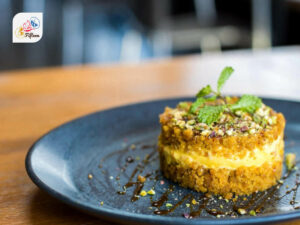
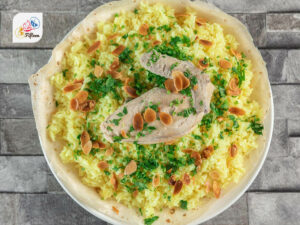
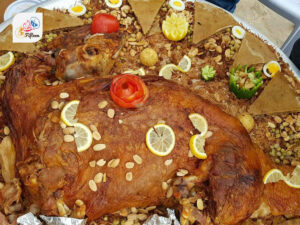
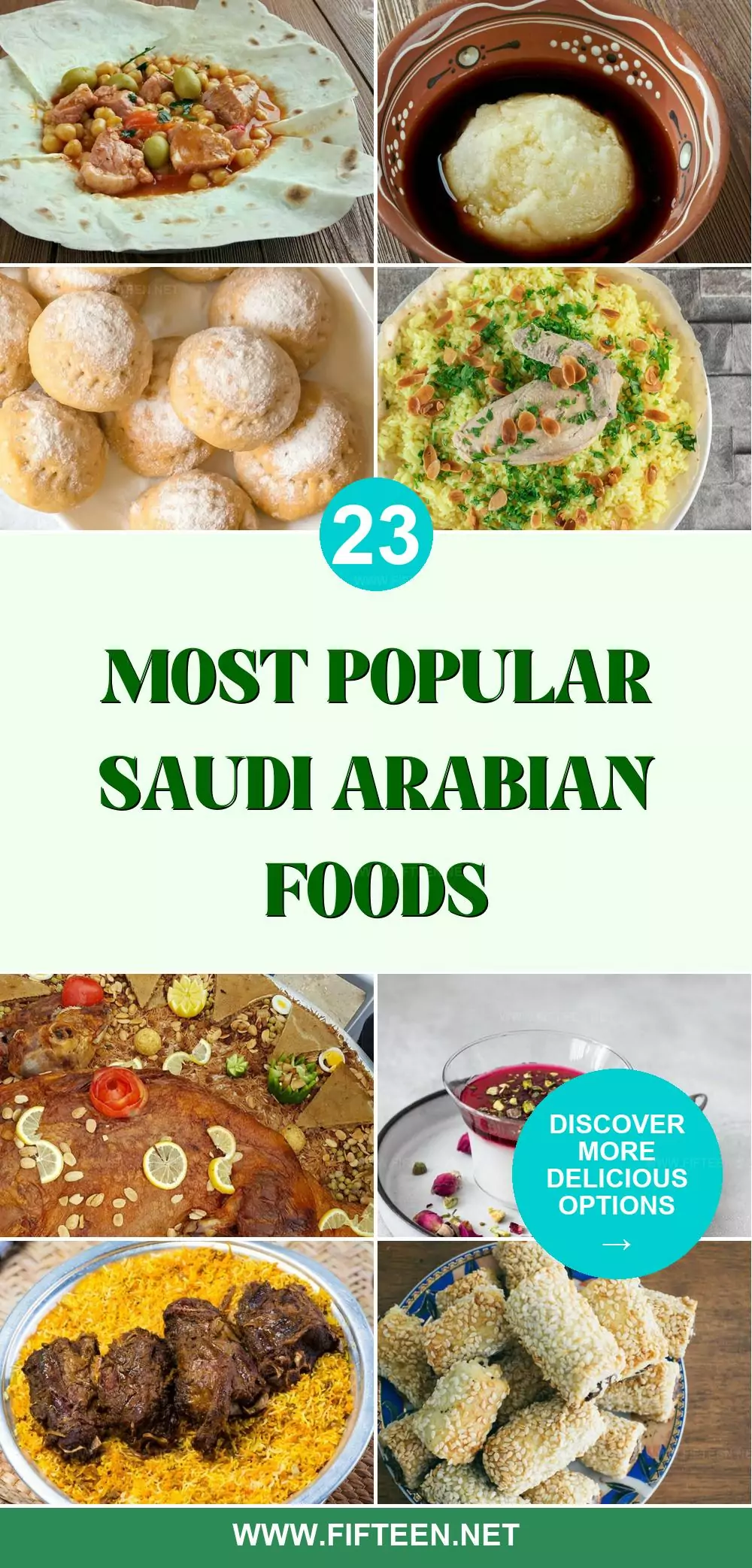
Jamie Scott
Editor in Chief, Senior Content Writer
Expertise
Home Cooking, Meal Planning, Recipe Development, Baking and Pastry, Food Editor, Cooking-video Maker, Western Food Evaluation Expert
Education
Le Cordon Bleu College of Culinary Arts
Local Community College, New York, NY
Jamie Scott is a skilled culinary expert and content creator specializing in Western cuisine. With over 15 years in the culinary field and formal training from Le Cordon Bleu, Paris, Jamie deeply understands how to blend nutrition with delicious flavors. His passion for cooking matches his commitment to making healthy eating accessible and enjoyable.
On Fifteen.net, Jamie brings a fresh perspective to classic dishes and beverages, offering readers insightful recipes, cooking tips, and a fresh view on meal planning that emphasizes taste, health, and simplicity.